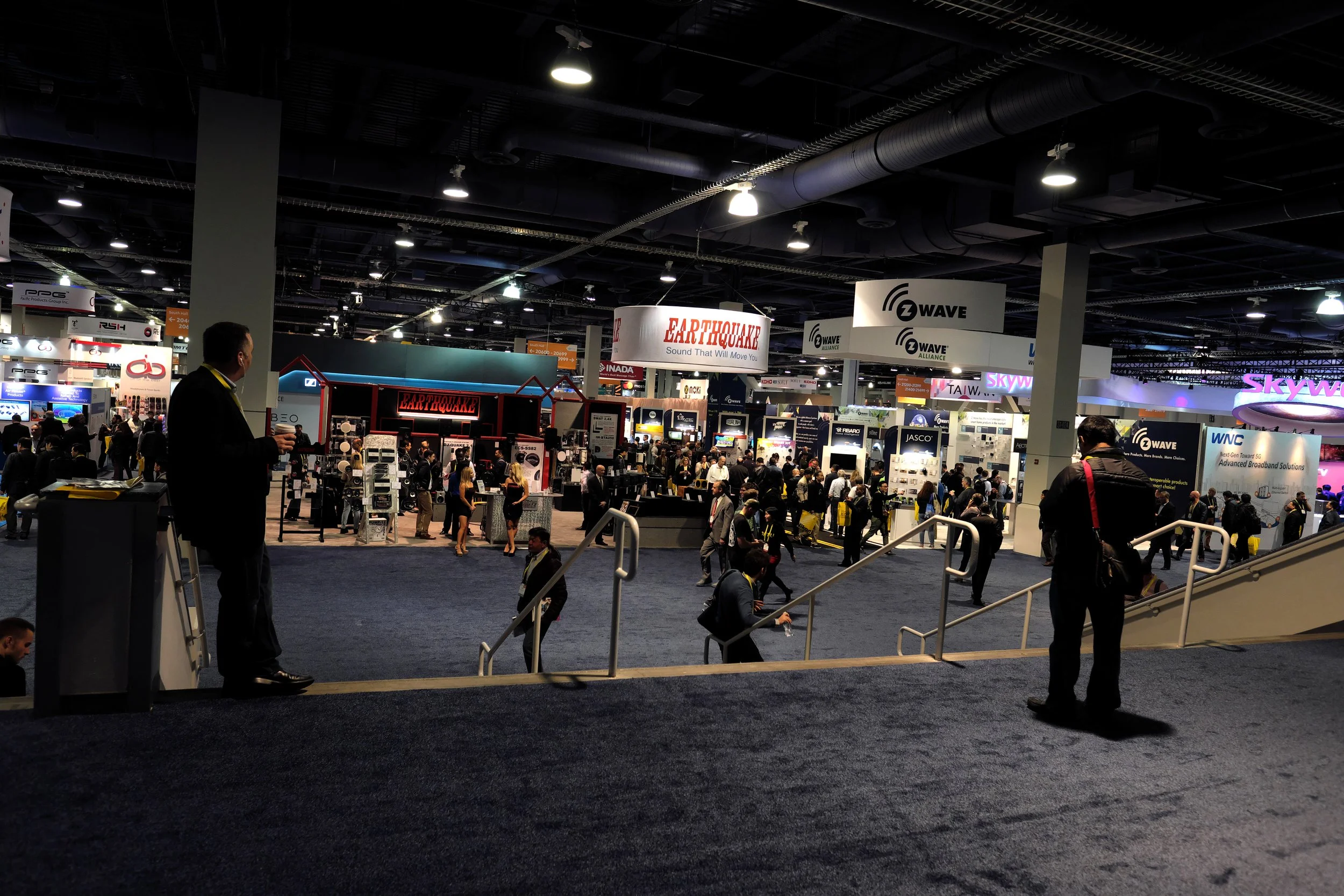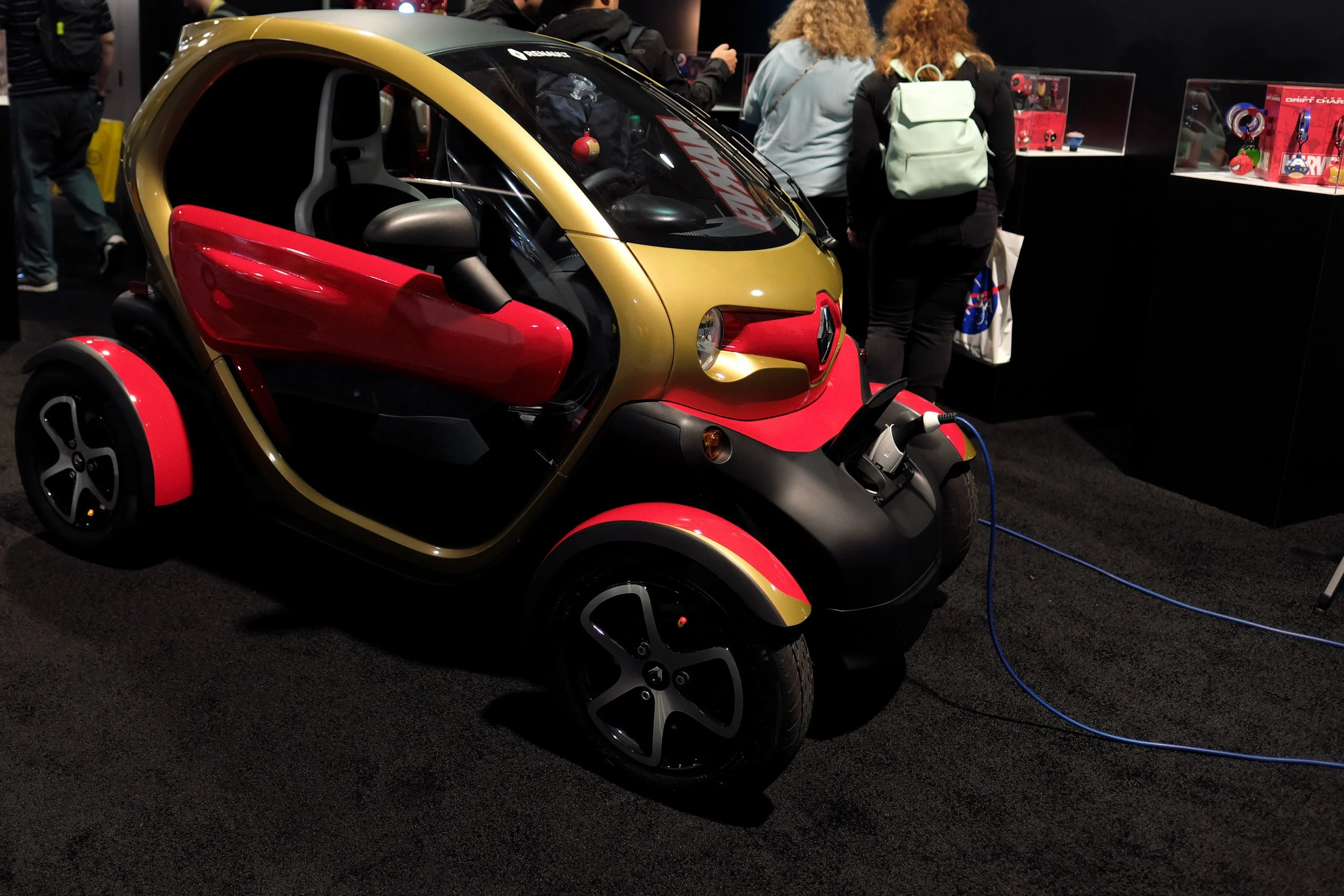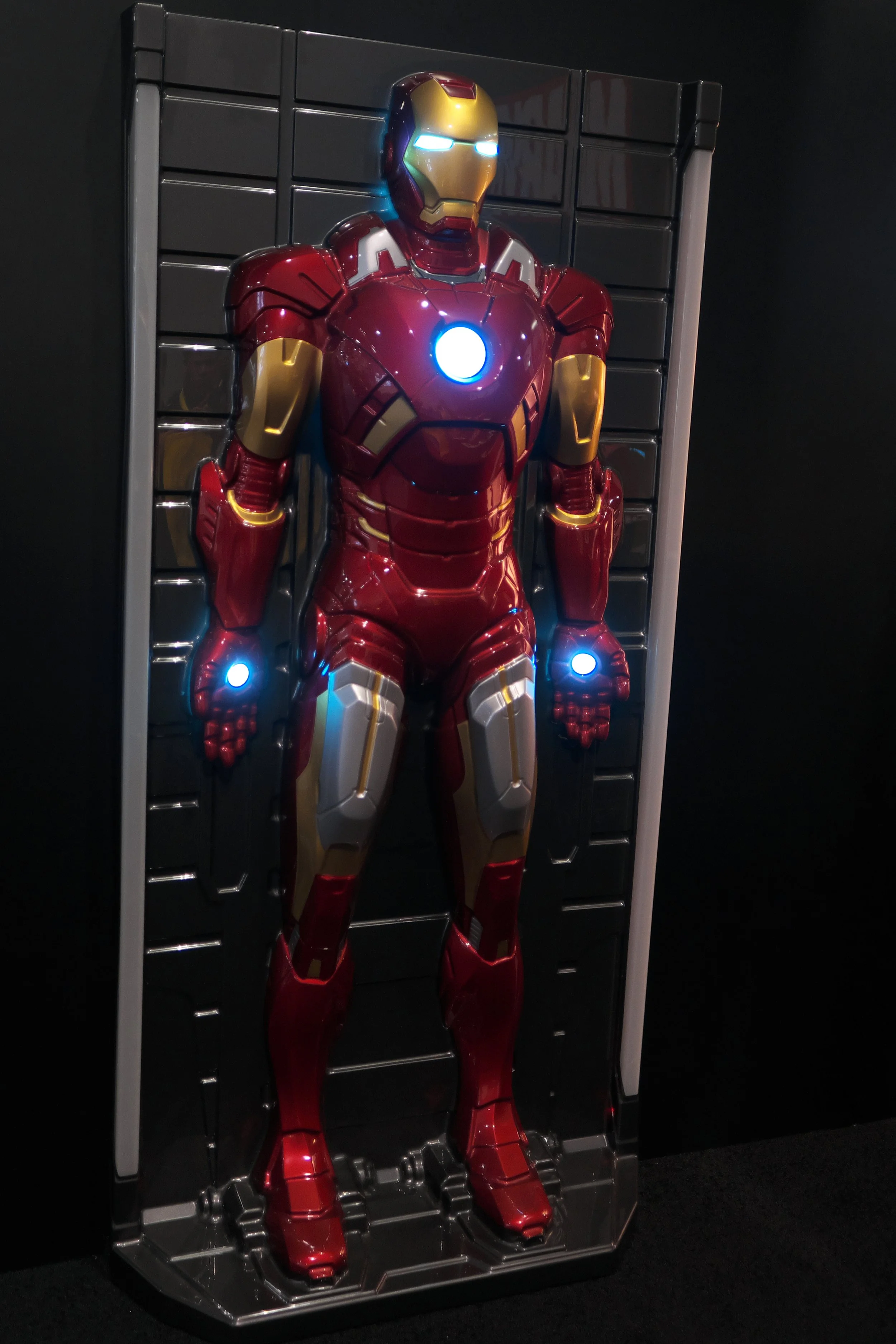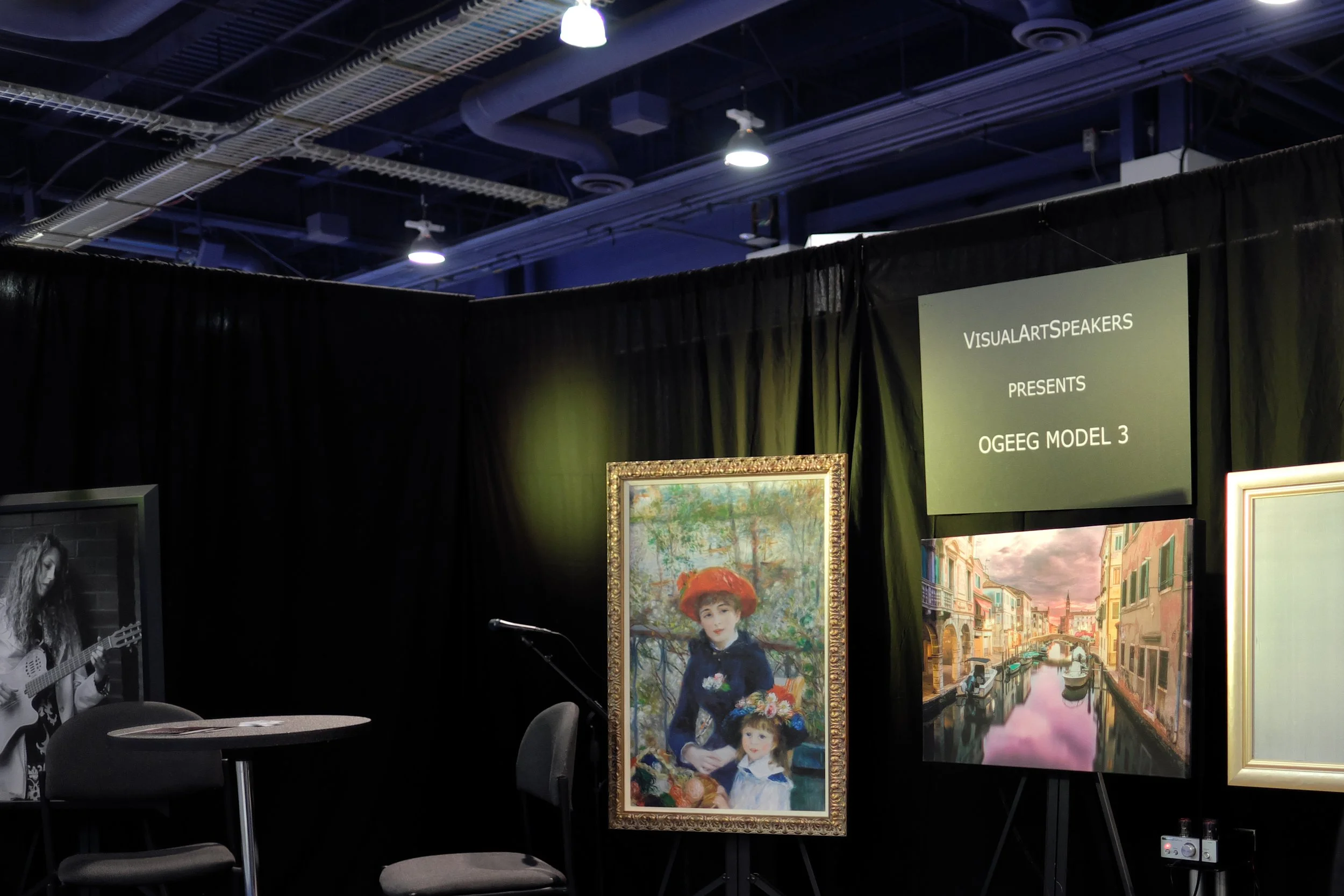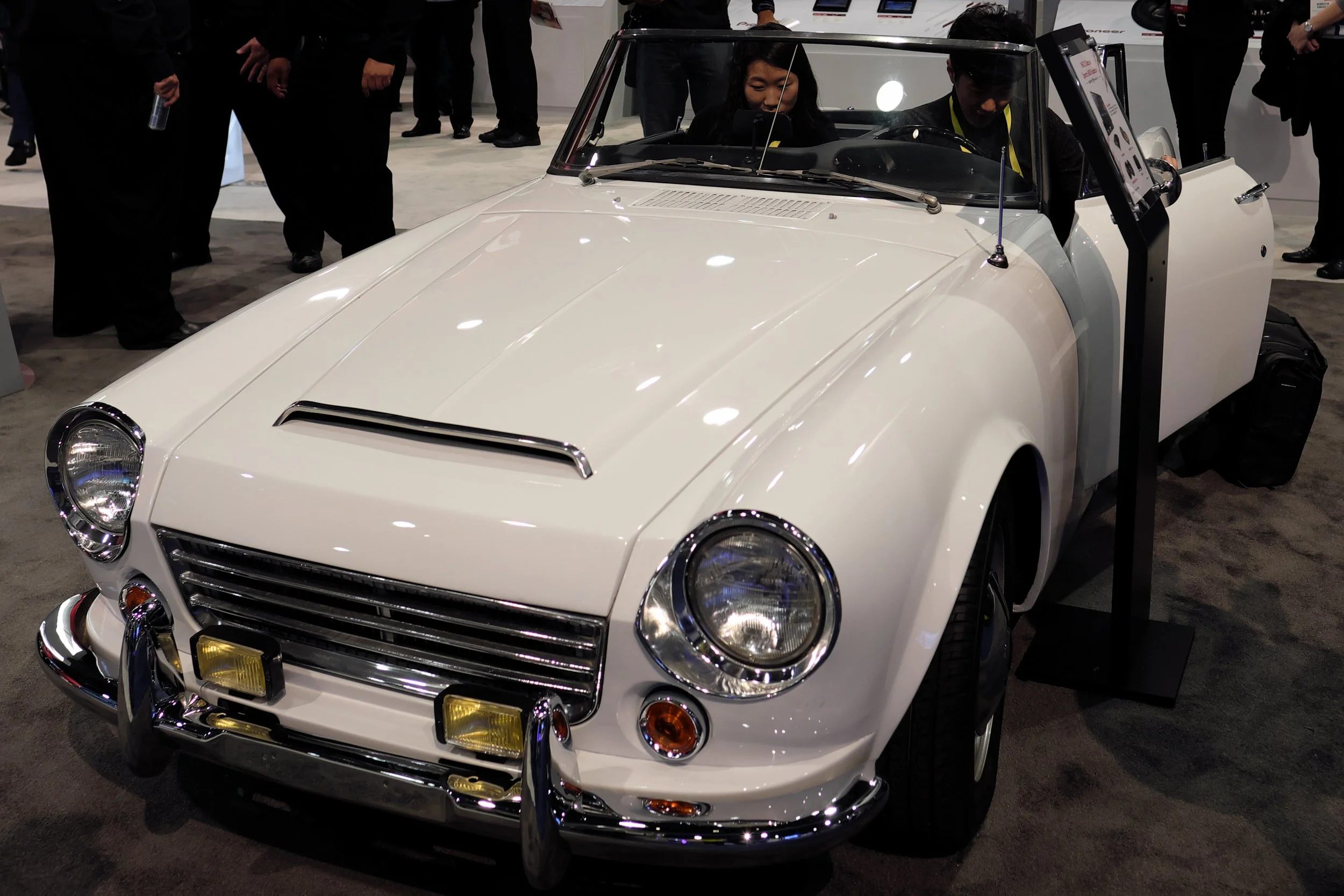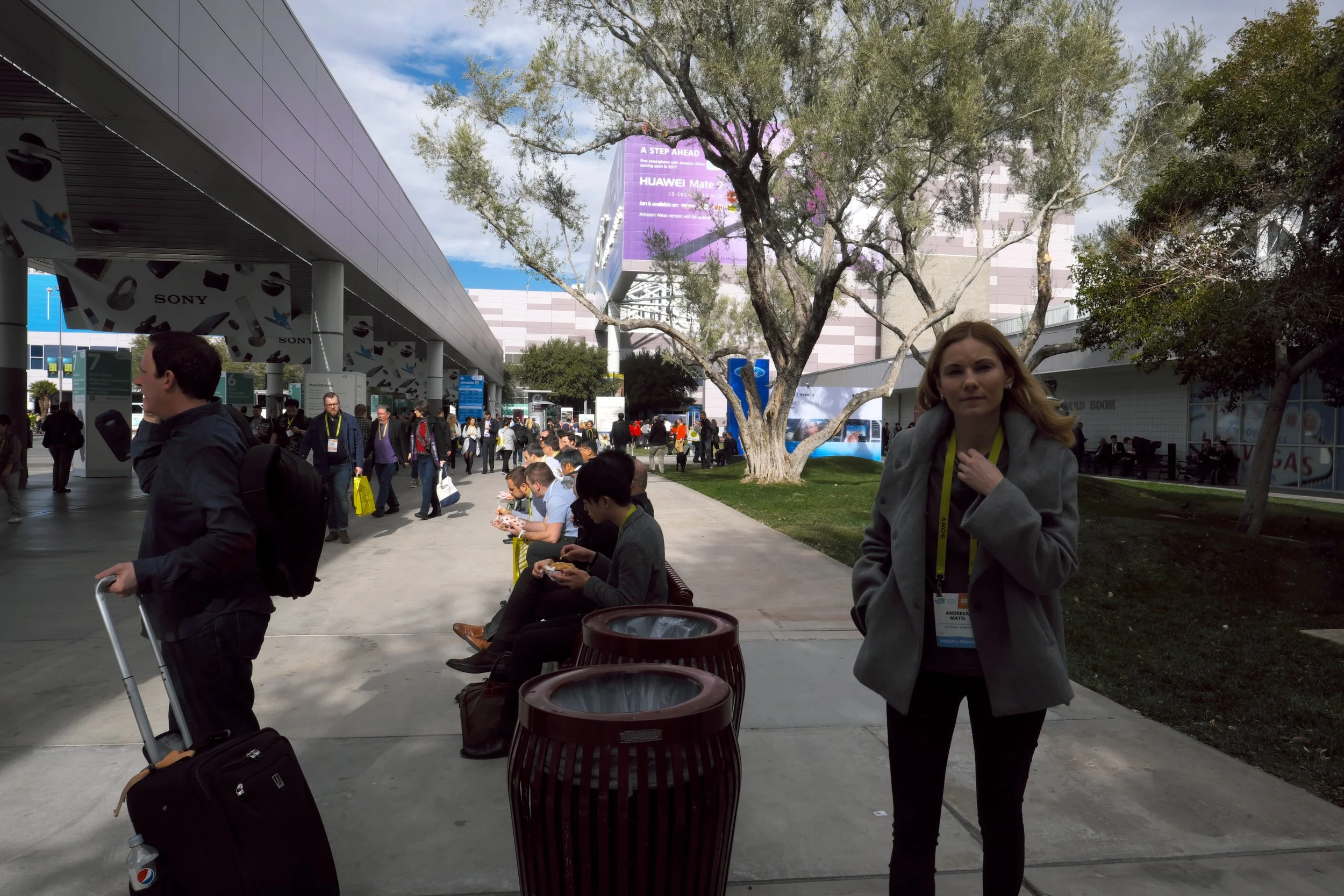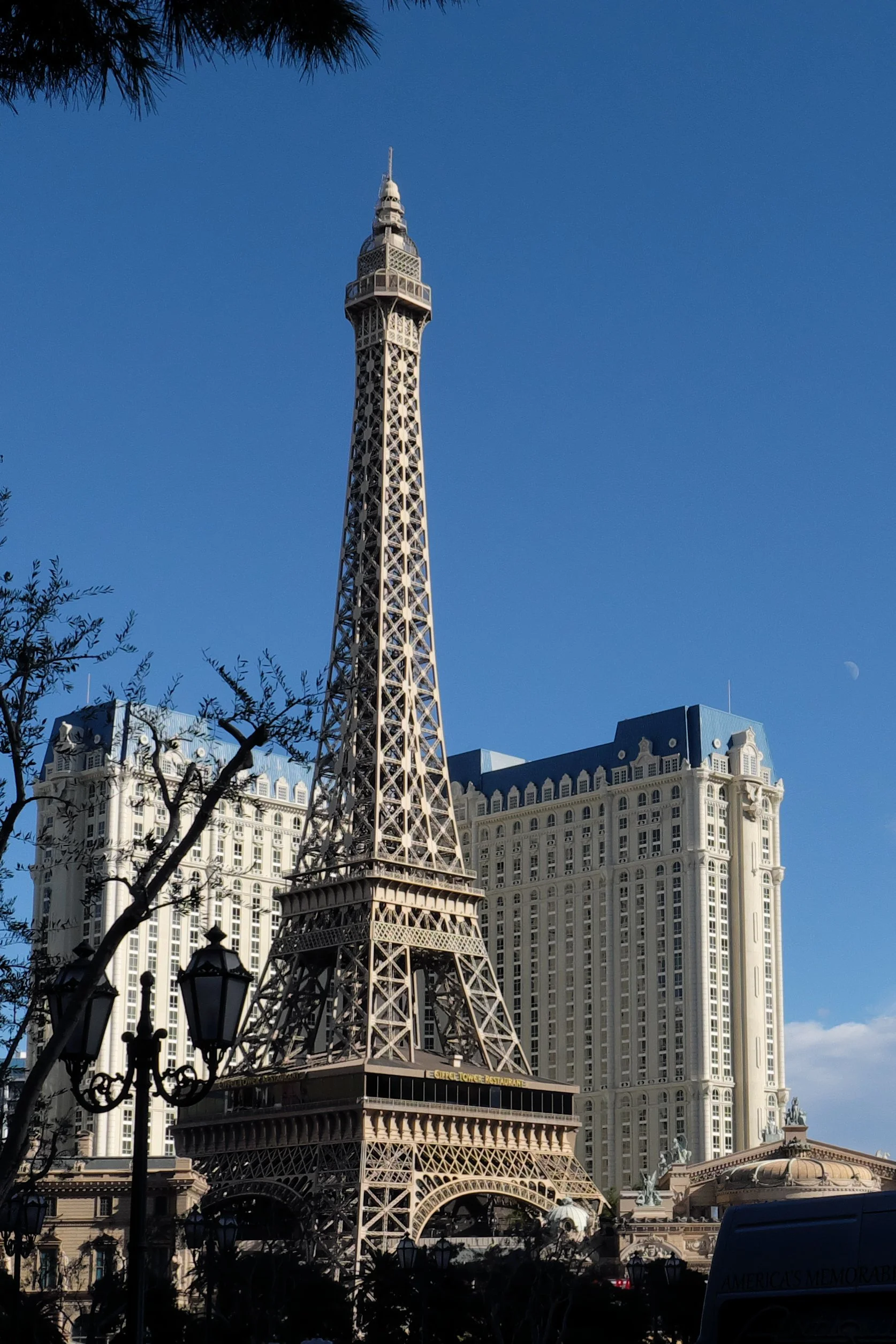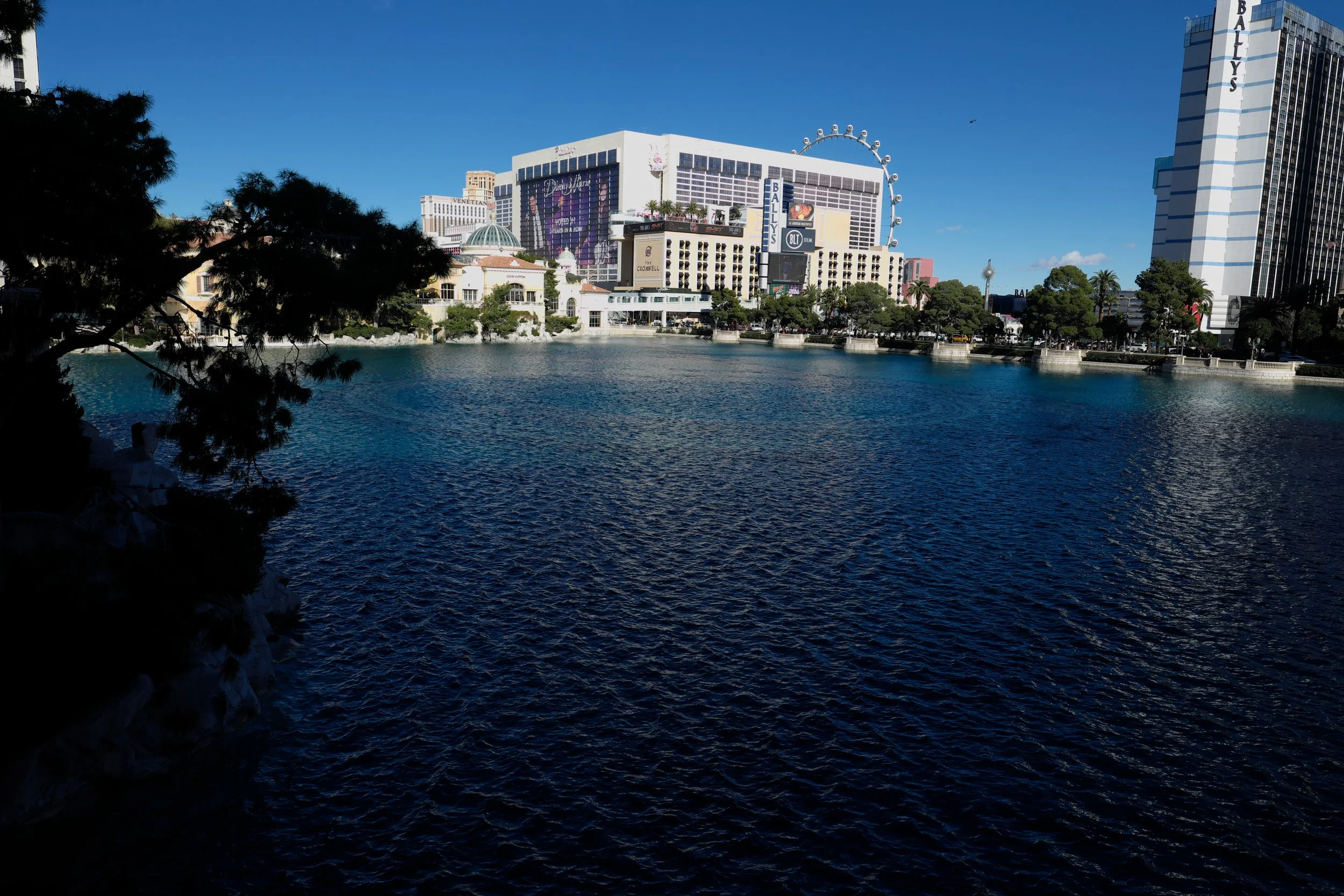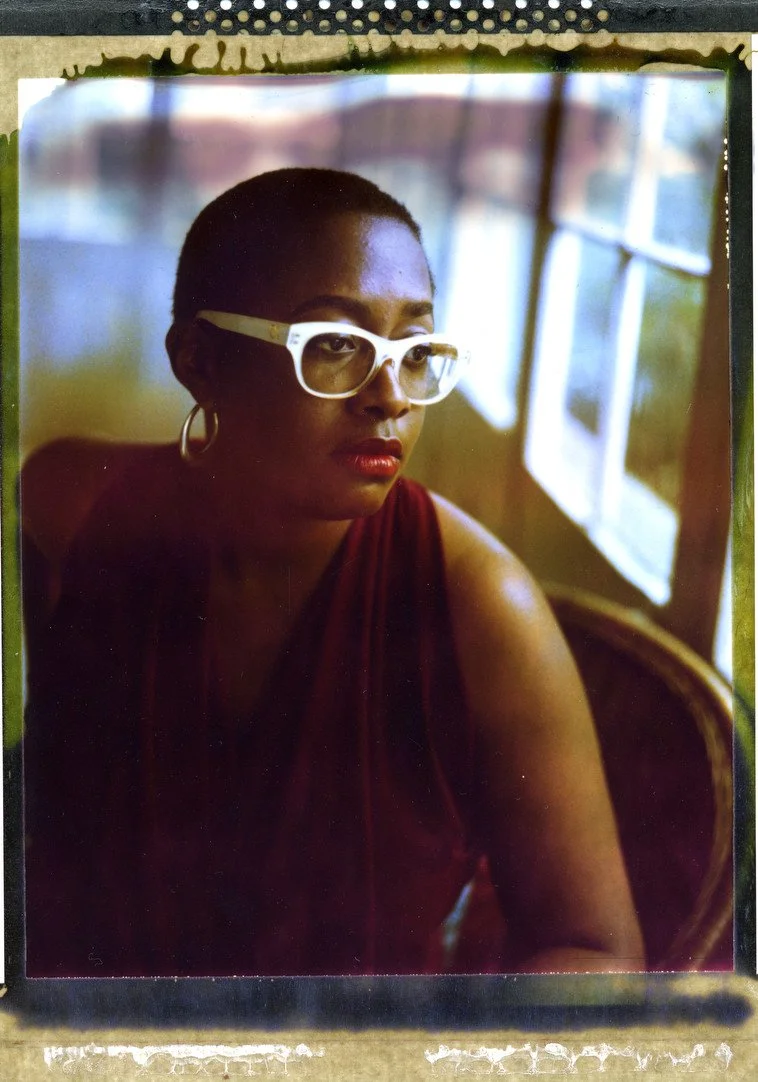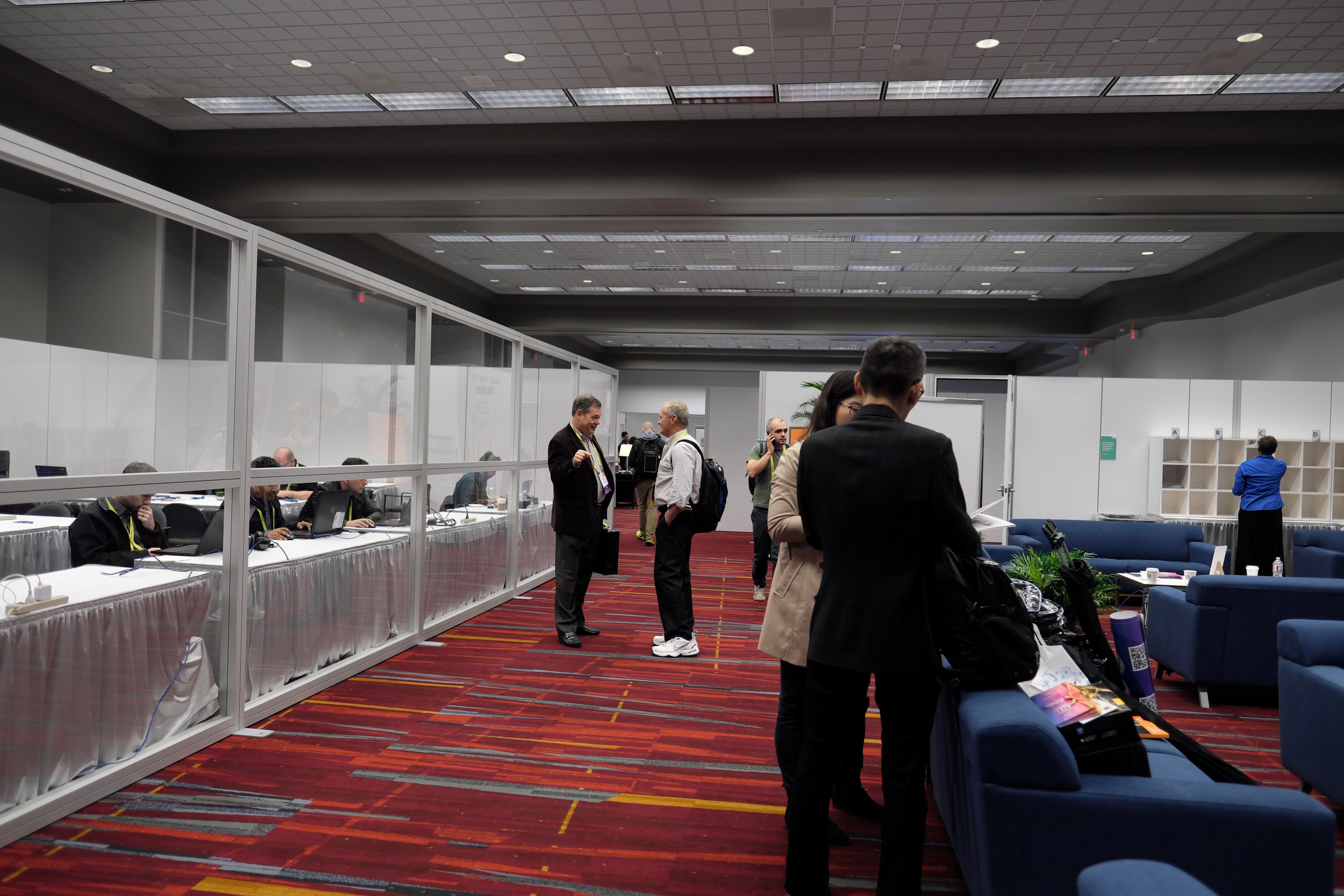
CES Press Room
Over the two decades I covered audio and video as a journalist, the press room at the Las Vegas Convention Center has morphed from being a distribution center for manufacturer’s product materials to one with laptop setups on repurposed catering tables. This picture from 2017 shows the cubbies, once stuffed with thick, high quality glossy paper brochures sitting empty as if awaiting the backpacks and boots of a busload of kindergarteners.
Joe Kane
Joe Kane, a visionary for the video industry and founder of Video Essentials, who cut his teeth on CRT projectors and set the standard for home cinema video reproduction for decades to come.
Earthquake
Earthquake was demonstrating a transducer that would shake, well, literally anything you could attach it to. Here it is demonstrated with a thick rubber pad. Standing on the pad while a 40 Hz signal was sent through it reminded me of the Footsie-Wootsie's vibrator machines set up in strategic locations at the Big-E fairgrounds. A representative at the booth said their devices are used in modern slot machines (shake you up when you win) and have even found themselves onto off shore oil drilling rigs where they act as alarms to wake crew when conditions require!
Their in-wall sub fits within 16" or 24” centered studs, but wraps around them on their face so they would be substantially noticeable.
Sennheiser Audio
The Sennheiser Ambeo VR microphone holds four separate capsules (tiny ones) to capture sound from four directions, or as the literature says, 360 degrees spherically. Sennheiser were also demonstrating a technology (somewhat unsuccessfully I must add) where sound replayed through headphones changes as your direction of view changes. While this type of technology is in its infancy, it, or something like it, will doubtless find its way into military and gaming applications.
Humanvox
Humavox, an innovative engineering company from Israel, was demonstrating their wireless charging chip technology chasing the OEM industry. The tiny chip (a few millimeters per side) can be imbedded in any device design and then those devices can be charged wirelessly. While Humavox were keen on showing it with specially designed backpacks, something no doubt attractive to both urban warriors and nature lovers alike, I was most impressed with the charging drawer set up in a coffee table. Imagine your gaming remote controls and TV and AV device remotes going into the drawer at night and never needing a charge. Of course, the charging drawer needs a charge, but that's just one stealthy connection.
JMGO
HiSense
JMGO was showing their S1 Pro laser projector. They call it a "TV" and that's probably intentional, because unlike conventional projectors, you throw "throw distance" calculations out the window. The S1 Pro sits on a table almost directly in front of your screen (from a minimum screen size of 50" to a hard to fathom 300" diagonal) and puts out 4000 ANSI lumens. Besides my photos, you may want to watch the video below. If there's a con to this Pro, is that it isn't a 4K projector.
HiSense has a 4K in a similar design. However. I actually prefer the JMGO whose design shields you more safely from the blinding effects of the laser that the HiSense (although I'm sure both are safe when installation instructions are followed). JMGO also offers a much larger maximum screen size than the HiSense's 100" maximum.
JMGO
HiSense
LVCC
Starving east coasters, exiting the Las Vegas Convention Center and hitting Big Daddy's barbecue pork trough at 11 AM. For audiophiles, the real show is not at the loud and noisy convention center with its less than ideal acoustic spaces. Before heading to the Venetian where a half dozen floors are feverently re-imagined for purposes of listening to audio, I took some interesting pictures of the carnival of wares at the LVCC.

VTL Amplifiers
Wilson Audio
Brinkmann Turntables
Luke and Bea Manley of VTL Amplifiers, Inc., always produce beautiful results at shows. VTL’s front end electronics, the TL-7.5 Series II Reference Line Preamplifier ($25,000) and TL-6.5 Series II Signature Line Preamplifier ($15,000) were in the room. There was a dCS Rossini CD player ($35,998) but Bea played some selections through their vinyl setup. That consisted of a Brinkmann Balance Turntable with a 12.1” Brinkmann arm ($27,490), RöNt power supply ($4,190) and a Dynavector Te Kaitora cartridge ($3,450). Phono preamplification was via the VTL TP-2.5i Phono Preamplifier ($3,750). Both their S-400 Series II Reference Stereo Amplifier ($33,500) and MB-450 Series III Signature Monoblock Amplifier ($20,000/pr) were on display driving a pair of Wilson Audio Yvette speakers ($25,500/pr). Nordost Odin2 cables (Nordost invested big in the show and they were almost everywhere) and Quantum QB8 Power System cleaning up the hotel’s AC power.
Having just heard the twice as expensive Wilson Alexia speakers two months ago, I have once again become enamored of Wilson’s superb resolution of detail. We listened to Cecile McLorin Salvant’s 2013 album, WomanChild. I didn’t note the cut, but her voice was sweet. I’ve been listening to her as I put together my show report, and she’s a wonderfully talented American jazz vocalist. Winner of the Thelonious Monk competition in Washington D.C whose Haitian ancestrymeans she sings effortlessly in French as well. Bea also put on a 2008 Leonard Cohen recording of Anthem, where he beseeches us to “ring the bells that still can ring.” The VTL system projected an extremely solid central image, honoring the memory of this great artist.

GoldenEar Technology
Pass Labs
Sandy Gross, founder of GoldenEar Technology, had his newly announced Triton Reference ($8,500/pr) floorstanding speakers on display. Known for incorporating powered subwoofers into his designs, the Reference One uses 1800 watts of digital amplification and signal processing for the three front-firing 6”x10” woofers. Two approximately 10” square planer passive radiators sit on each side of the towers. A pair of Pass Lab Xs 150 amplifiers ($65,000/pr) sat massively between the speakers, powering two 6” mid/bass drivers and GoldenEar’s own Neodymium folded ribbon tweeter between them.
We listened to some interesting music as usual in Sandy’s room including a Leo Kottke instrumental and a Empire Brass Quintet piece called “Hopper Dance” that in particular highlighted the powerful and smooth folded ribbons contribution to the GoldenEar sound. That house sound is always detailed and inviting. Bass was nicely balanced and certainly powerful, with claimed flat extension to 20 Hz, something I don’t doubt. If you’re primarily a music lover, you can uncheck subwoofer from your shopping list.
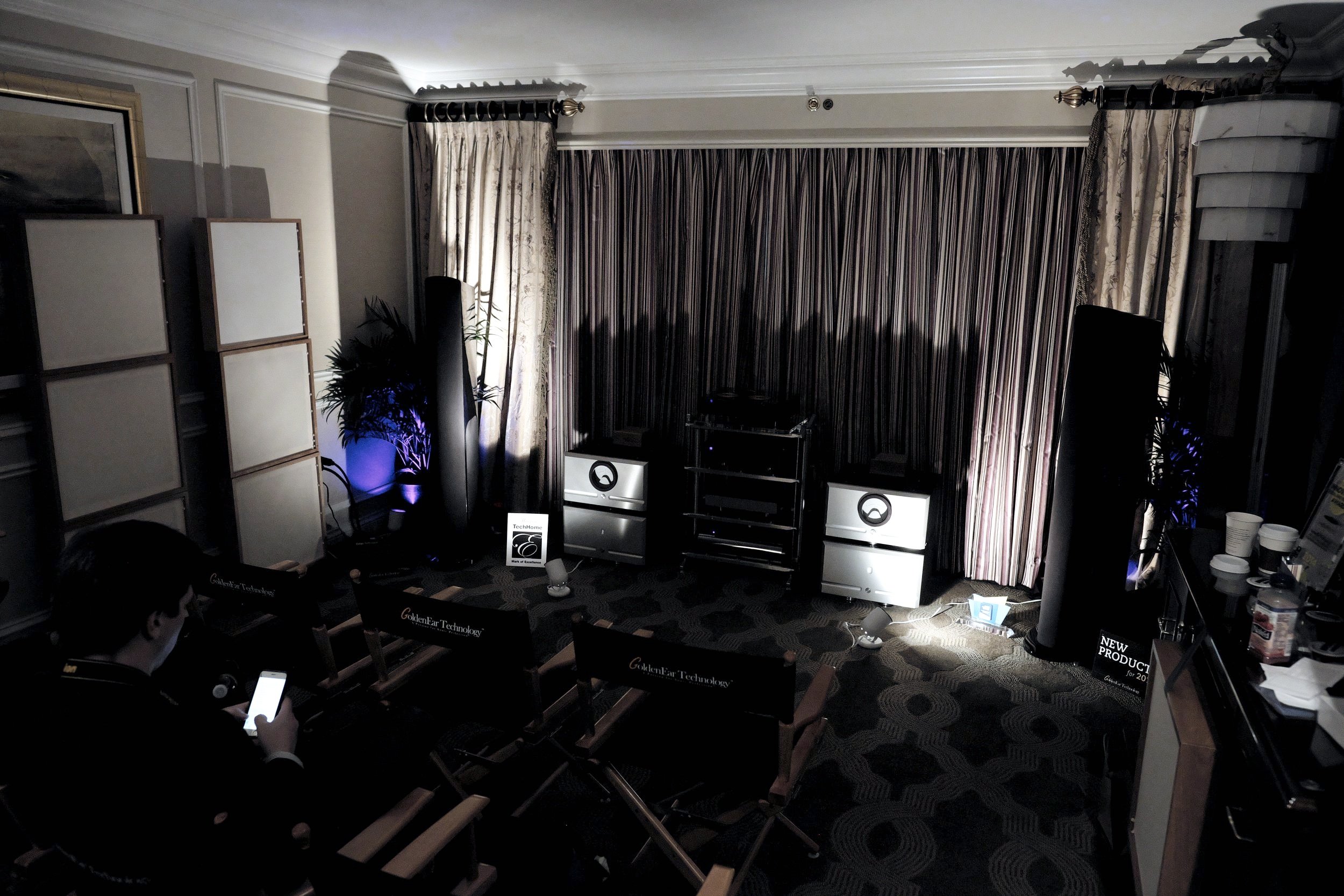
Stand mounted AON 2 from GoldenEar
Martin Logan
Rogue Audio
Dennis Chern of Martin Logan was demonstrating one of the best sounding systems at the show, and doing so at a cost that was beyond reasonable, with the new Martin Logan Impression 11A speakers. With an 8” forward firing and matching 8” rearward firing woofer, implementing their Force Forward technology first employed in my own Prodigy-era speakers. The model number, 11, implies an 11” wide panel with an active (amplified) bass system. For $10,000 a pair, they put out spectacular sound. Some fiercely bold car paint finishes are available at extra cost, but they don’t change the sound. A pair of Rogue M-180 monoblocks were driving the panel section and after we switched them from ultralinear to triode operations, everything on the Steely Dan track "Slinky Thing," a track I’m extremely familiar with, fell right into place. The soundstage and resolution were tremendously realistic.
Stand mounted AON 2 from GoldenEar
Paradigm
Paradigm had their Persona 9H speakers silhouetted against the Las Vegas skyline in their room. The new $35,000 per pair speakers (update 2022, $37,000/pr in standard colors the Aria blue below, or $5,500 per pair additional for custom colors) includes two 700 watt amplifiers to drive each tower's four bass drivers and use Anthem Room Correction for matching to your room. While manufacturers like Revel use beryllium tweeters, the 7” beryllium midrange driver is truly a first for me. Unfortunately the display was silent, but the deep Aria blue gloss finish no less stunning.
Mobile Fidelity Sound Labs
Its great to see vinyl experiencing a renaissance. The MoFi room (Mobile Fidelity Sound Labs) was doing brisk traffic. I sat in for some listening and coveted the many titles on display. The Koetsu Onyx cartridge on the Spiral Groove Revolution turntable sounded sweet through a BAT phono stage and Tad electronics and speakers.
Dynaudio
Octave
The sounds of Bela Fleck’s banjo drew me into the Dynaudio suite. The entire third generation Contour speaker line, with the Contour 60 as the flagship, were on display. These were my favorite, most inviting sound at the show. These $10,000 per pair speakers were driven by Octave tube electronics, a brand I wasn’t heretofore familiar with. I was very enamored of the rich palpable presence this three-way tower lent to London Manner’s “Hey Now” and Mark Knopfler’s Stratocaster. It has been twelve years since I reviewed a full surround Contour system from Dynaudio (2004 review here) and I’m happy to see Dynaudio bringing out this new generation. The tweeter is a now the Dynaudio Esotar2, a soft dome fabric design. The cabinet edges are rounded (contoured you might say). I thoroughly enjoyed listening to them.t.
Devore Fidelity
Sugen
John Devore was playing his Gibbon speakers ($15,000/pr) getting fine, focused sounds on vinyl. A Brinkmann Spyder turntable ($14,400 plus $5,490 Brinkmann 10.5 tonearm), with a second EMT 997 tonearm ($5,495) and both EMT JSD-S75 ($5,400) and TSD-75 ($2,100) moving coil cartridges, although I don't know on which arm. A Sudgen Masterclass PA4 phonostage ($2,500) and Masterclass LA4 linestage ($3,750) pre-amplification chain fed the Sudgen Saffire FBA800, a 40 watt class A amplifier ($7,500) amp to ample volume. Relaxing sounds, as John set up the speakers asymmetrically in the room to get what he felt I'm sure was the best performance. The simplicity of his speaker designs are what have made them a favorite for many audiophiles for years.
Wilson Benesch
Thales
Ypsilon
In the room set up by Aaudio Imports from Parker, Colorado, I found the most distinctive looking speakers at the show, the A.C.T. One Evolution P1 Loudspeakers by Wilson Benesch ($38,800) adorned in a blue “Ettore” finish. The two 7” midranges vertically flank the 1” semisphere tweeter, while a single 7” bass driver sits at the bottom of the black anodized speaker baffle. The Wilson Benesch Tonus Infrasonic Generator ($12,500) is a self powered subwoofer you see positioned between the speakers. Ypsilon electronics included the VPS-100 Valve Phono Stage ($26,000) pictured below the Thales TTT Compact II ($14,500) turntable with the Thales Simplicity II tonearm ($9,200) and Ikeda KAI MC Cartridge ($8,500).
Wilson Benesch tonearms are highly regarded as one of the best available both sonically, for their low coloration, and mechanically, for their superior engineering. The sound of their carbon fiber composite A.C.T. One Evolution P1 was simply as precise and free from cabinet colorations as one would expect from pioneers in carbon fiber technology. I asked them to play the Nils Lofgrin song "Keith Don't Go" on vinyl, as I'd never heard it but on CD, and it sounded absolutely fabulous as if the speakers were designed to play that one song in particular. The sharp acoustic guitar attack as captured through Nil's piezo equipped guitar is amplified and projected without the slightest harshness. Good thing my name isn't Keith or I'd still be there a'listening.
Revel
Mark Levinson
Revel were playing their new beryllium tweeter equipped F208Be speakers. This brings their beryllium tweeter, complete with a new 5th generation, wave guide, found in the high end Ultima2 line down to Revel’s Performa3 series. At “under $10,000 but price still TBD,” the F208Be is still less than half the price of the smaller of the two Revel towers, the Studios. While remaining in the Performa3 line, the design is all new and not just an upgraded F208. For instance the 5-1/4” midrange and dual 8“ woofers incorporate white ceramic bonded to aluminum (Deep Ceramic Composite or DCC) and the crossover is new. Revel also extends the same 1” beryllium tweeter and a DCC 6-1/2” woofer to their M106 bookshelf speaker.
The show space was a little awkwardly arranged so I didn’t do much listening. Knowing what speaker designer and Director of Technology of the Harman Specialty Group. Kevin Voecks is capable of, I’m confident these new Performa’s will shine. From the first time I heard the first generation Revel Gems to the reference Ultima2 system I use everyday in my home theater and my music studio, I’m glad to see these new more affordable models joining the line for more audiophiles to enjoy. While meant to grab your attention in show stopping white gloss, you’ll also be able to get the F208Be in black and walnut.
Egglestonworks
Triangle Art
Works of art, with sound to match
Hifiman
While the Shangri-La $50,000 headphone system couldn’t help but suck all the oxygen out of the room, the brilliant thing about Fang Bian’s designs is that the family sound is a) wonderful and b) heard in everything he designs. I love the headphones honest portrayal of even the near entry level HE400i I use almost daily in my studio. Closer to the resolution of electrostats like Stax than conventional headphones, but relaxed and warmer.
MBL
At shows for as long as I've been going, MBL win the award for uniqueness of design. The MBL 101 E Mk II speakers ($70,500/pr) reproduced piano better than anything I heard at the show. Likewise, the cymbals on Miles Davis’ Kind of Blue were visceral with body and sheen unlike anything you could imagine. I asked for and received “Chuck E’s in Love” from Rickie Lee Jones’ first album. Although here MBL were using digital as a source, with an MBL N31 DAC ($15,400), N11 Stereo Preamplifier ($14,600) and quad N15 mono amps biamping the speakers ($17,800 per monoblock). A formidable lineup for the well heeled. Timbre of instruments such as the trumpet was excellent, as was the quality and extension of the bass. Center image of these omnispherical design are largely influenced by the room which might explain the less that convincing center image development. Raising the volume past uncomfortable level brought out a slight brittleness in some of the source material I thought but that’s true of most speakers. Overall though, if you have the money, MBL should definitely be on your audition list.



